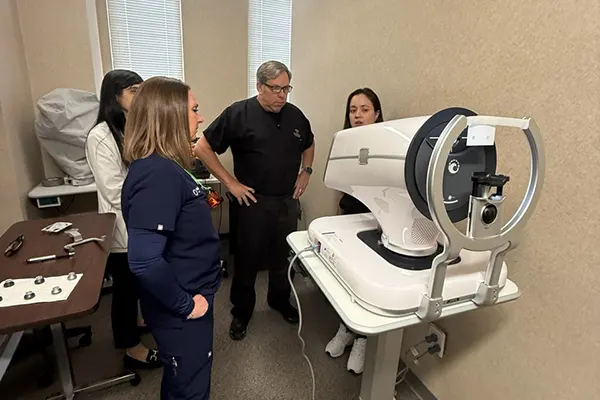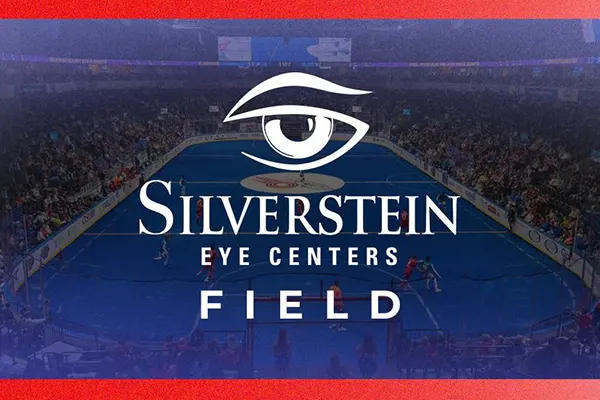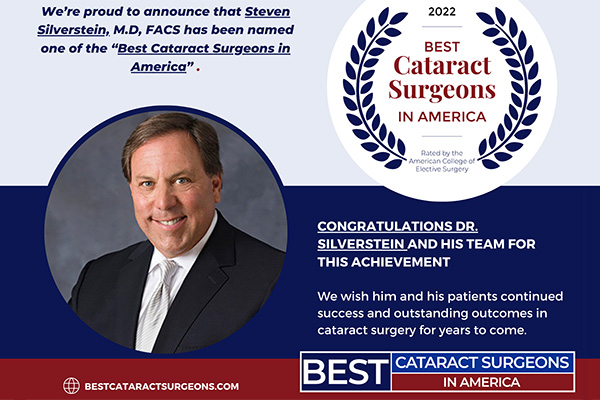Cataract Surgery for Kansas City Patients
What is a Cataract?
A cataract is a change in the clarity of the lens inside the eye. The natural lens becomes yellow and clouded instead of crystal clear like the lens in a camera. Instead of light focusing crisply inside the eye, light is scattered as it passes through the cataract. Cataracts occur in everyone’s eyes over time but can be monitored until they impact your activities of daily living.
Once a cataract forms, it must be surgically removed. There are no other effective treatments to treat a cataract. The procedure typically takes only a few minutes, and is most often performed under topical (numbing drops) anesthesia, usually requiring no stitches. During cataract surgery, the natural lens of the eye is removed, and a new, artificial lens is implanted. This artificial lens is made of a material that has been used in eye surgery for over 50 years. The body tolerates this material very well.
Symptoms of cataracts may include decreased and/or blurry vision, a change in color vision, difficulty reading for long periods, and problems driving at night or in bright sunlight. Glare and halos around lights at night are also frequently noted by patients with cataracts. You may suspect a cataract if your vision has been gradually declining over time.
Cataract Surgery
Cataract surgery is performed in an outpatient surgery setting with a mild sedative and local anesthesia, allowing for rapid recuperation. After the pupil is dilated, a small incision is made at the edge of the cornea where the colored part of the eye meets the white of the eye. The outer shell or capsule of the lens is opened and the cloudy contents of the lens are removed by phacoemulsification with state-of-the-art microsurgical instruments. The lens implant is injected into the clear capsular bag that previously contained the cloudy cataract. Minimal discomfort accompanies the procedure and good vision is usually achieved several days after the procedure, although full visual recovery may take longer. Eye drops are prescribed for you after surgery to prevent infection, control inflammation, and achieve the best visual outcome.
What is a lens implant?
Improved technology has greatly increased the safety and results of the cataract procedure. Premium lens implants offer an opportunity to dramatically reduce your dependency on glasses after surgery. Your cataract surgery is a once-in-a-lifetime event, and the benefits of a premium lens implant should be strongly considered.
Premium lens implants are designed to provide a continuous range of vision–near (newspaper), intermediate (computer screen), and distance (driving) –resulting in freedom from glasses or contacts for most daily activities. When selecting lens implants, you have the opportunity to correct one range of vision with basic lenses (distance or near), or continuous range of vision with premium lenses.
No other technology can provide distance and near vision in the same eye, and after removing the natural lens, implantation of the bifocal lens in both eyes provides remarkable, binocular (using both eyes) vision for both distance and near activities. This technology has been FDA approved since the mid-1990s, and is enjoyed by millions of happy, satisfied patients. Corrective eyewear may still be necessary for some activities, but the freedom from glasses and contacts is incredible.
Find out more about:


